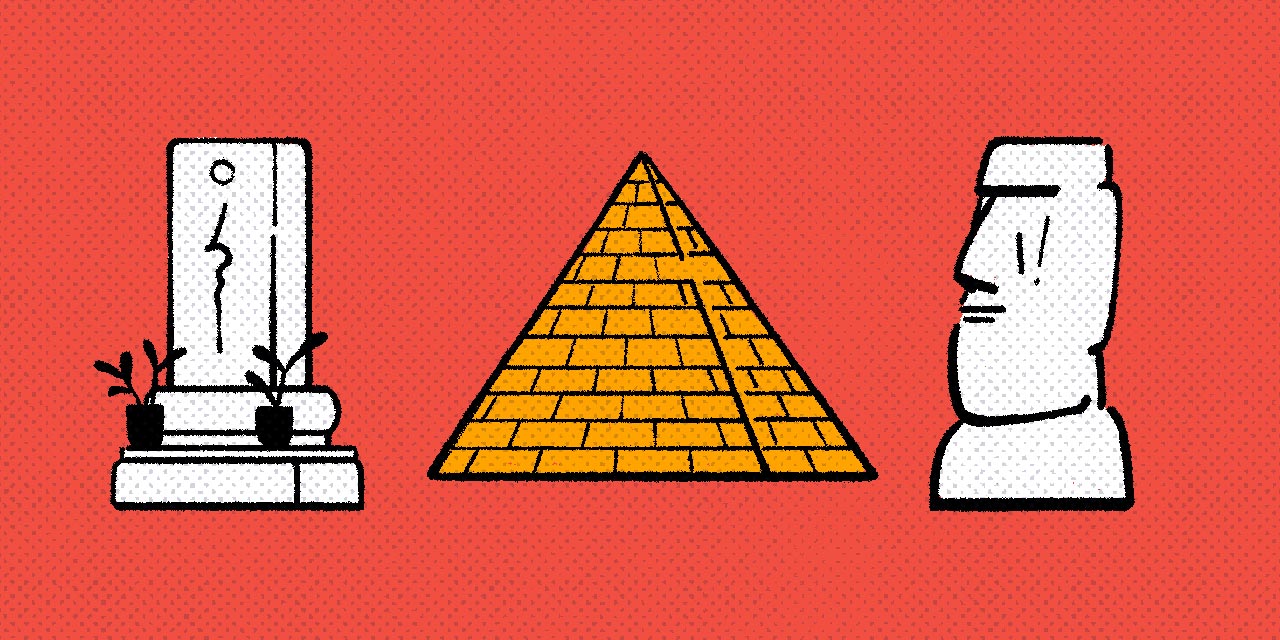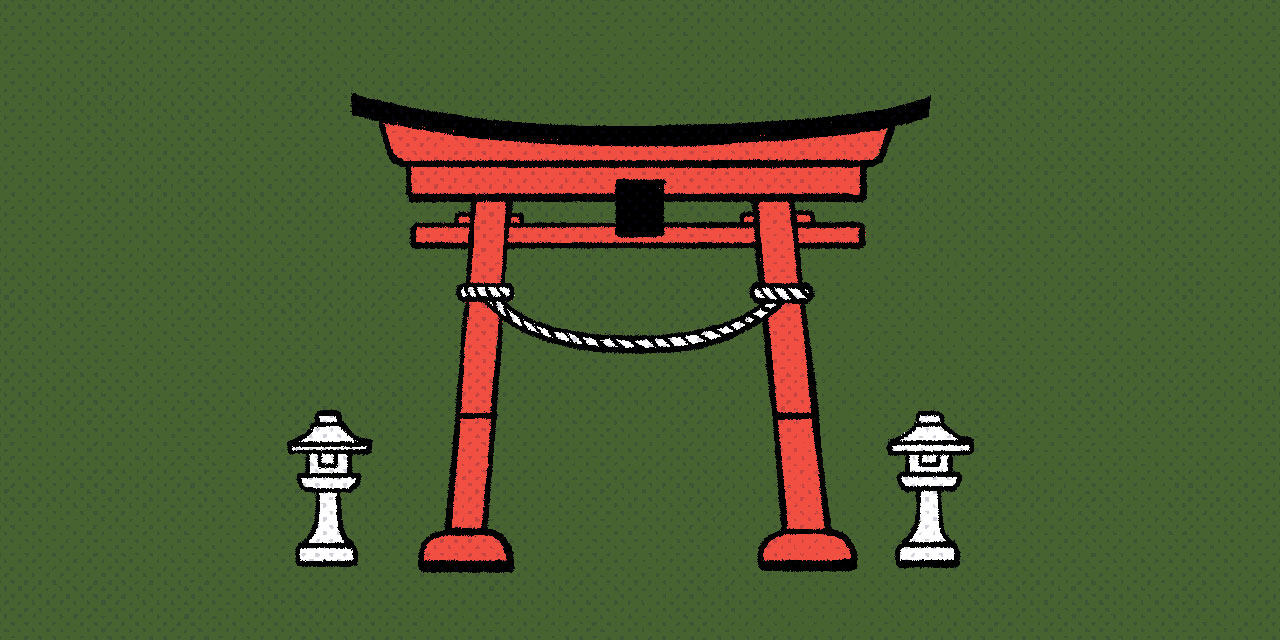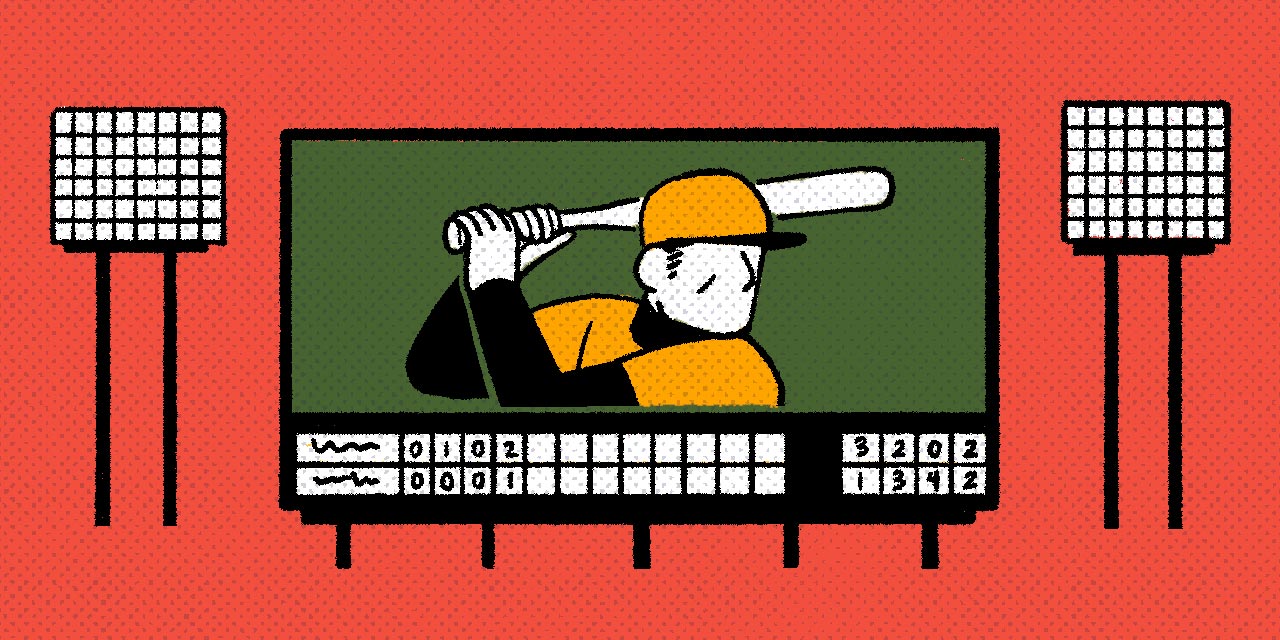The Japanese counter 基 (き) is generally used to count big, hard-to-move installments—anything from fireplaces and statues to industrial machinery and even tombs and pyramids.
But wait a minute. There are a TON of large objects that you can't push by hand out in the world.
And we're going to go over all of them.
First, take a look at the table below to learn how to count with this counter. (Or if this is your first time learning about counters, check out our beginner's guide.)
- Pronunciation of the Japanese Counter 基
- How to Use the Counter 基
- Remains, Relics, and Ruins
- Shinto and Buddhist Installments
- Garden and Yard Items
- Park or Public Space Installations
- Lighting
- Factory Machines
- Power Plant Reactors and Generators
- On-Site Transportation
- Ocean Structures
- River Structures
- Large Screens
- Large Tanks
- Fish Fins
- Towers
- Foundations
- Flying Vehicles
- Large Indoor Installations
- Other Installations and Structures
- Installation Complete!
Pronunciation of the Japanese Counter 基
| Numeral | Japanese | Reading 1 | |
|---|---|---|---|
| 1 | 一基 | いっき | |
| 2 | 二基 | にき | |
| 3 | 三基 | さんき | |
| 4 | 四基 | よんき | |
| 5 | 五基 | ごき | |
| 6 | 六基 | ろっき | |
| 7 | 七基 | ななき (しちき) | |
| 8 | 八基 | はっき/はちき | |
| 9 | 九基 | きゅうき | |
| 10 | 十基 | じゅっき (じっき) | |
| 11 | 十一基 | じゅういっき | |
| 12 | 十二基 | じゅうにき | |
| 100 | 百基 | ひゃっき | |
| 1,000 | 千基 | せんき | |
| 10,000 | 一万基 | いちまんき | |
| How many | 何基 | なんき |
基 begins with a k- sound, so it follows the pronunciation change chart on our Japanese Counters guide.
How to Use the Counter 基
The kanji 基 by itself means "foundation," and it's used to count big, stable things that have been purposefully built or installed somewhere, and which are impossible or really tough to move by hand. I'm about to list a bunch of them.
Graves and Tombs

We count big grave markers like pyramids, ancient tombs, gravestones, cave graves (石室), Moai statues, and generic tombstones with 基. We even use it for tumuli (burial mounds that look suspiciously round).
- エジプトには100基以上のピラミッドがある。
- In Egypt, there are over a hundred pyramids.
- コウイチのおじいちゃんは、3基の古墳を発掘した。
- Koichi's grandpa excavated three ancient tombs.
- 墓石2基セットで99万円だって。
- It says two tombstones for ¥990,000.
What if Koichi had miniature Moai statues on his desk? In this case, you could still count them with 基, but people usually use the general counters つ or 個 (こ) when referring to miniatures.
- コウイチの机の上にはモアイ像の置物が2つある。
- There are two Moai statues on Koichi's desk.
- ガチャポンで金色の石塔が一個当たった。
- I won a golden gravestone from gachapon.
Coffins and caskets can occasionally be counted with either 基 or 棺 (かん).
- どうしてここに棺が5基あるんだ?
- Why are there five caskets here?
- ドラキュラ伯爵はお気に入りの棺を3棺持っていた。
- Count Dracula had three favorite coffins.
Remains, Relics, and Ruins
Remains, relics, and ruins of houses, residences, ancient dwellings (for example, ruins of a pit dwelling from long ago), even kilns or other large structures, are counted with 基.
- トーフグの社員が弥生時代の住居を2基発見した。
- A Tofugu employee discovered the remains of two Yayoi period dwellings.
- 窯跡が3基発掘された。
- The remains of three kilns have been excavated.
Shinto and Buddhist Installments

You can count the big installments you see at Buddhist temples or Shinto shrines with 基. These include Shinto shrine gates (鳥居), Buddhist altars (仏壇), Shinto altars (祭壇), pagodas, stupas, other buildings included within a Buddhist temple or Shinto shrine, main halls of a Buddhist temple, and stone monuments.
- 台風で神社の鳥居が1基壊れた。
- The Shinto shrine's torii gate was broken in the typhoon.
- 新しく仏壇を3基設置しました。
- We installed three new Buddhist altars.
- この寺には五重塔が2基ある。
- There are two five-story pagodas in this temple.
What about portable shrines (神輿)? They're not installations, in fact, they're meant to be carried by many people. Well, we can count those with 基 too. Technically one person can't pick one up, so they're pretty cumbersome, right?
- このお祭りでは、10基の神輿が町を練り歩きます。
- At this festival, ten portable shrines are paraded through the town.
While we're specifically talking about Shinto and Buddhist items, other religious objects can be counted with 基 as well. One example would be Christian altars (祭壇).
- 教会には、祭壇が3基あります。
- There are three altars in the church.
Garden and Yard Items
Larger yard and garden ornaments that need to be installed can be counted with 基. This includes anything from garden lanterns and stone towers to other kinds of stone statues or carvings. (Japanese gardens include a lot of stone, can you tell?)
- こことそこに石灯籠を2基置こうと思ってるんです。
- I'm thinking about placing two stone lanterns here and there.
- うちの庭には小人の石像が7基あります。
- There are seven stone dwarf statues in our yard.
- 朝起きると、石塔が一基壊されていた。
- When I woke up in the morning, I found that one of the stone towers had been destroyed.
Park or Public Space Installations
Installations in parks and other public spaces, like stone monuments (sometimes bearing an inscription), statues, sculptures, benches, playground equipment (like the jungle gym, slides, or swings), and public toilets are all counted with 基.
- この公園には、戦争の記念碑が4基ある。
- There are four war memorial monuments in this park.
- 駅前の広場に、ベンチが10基設置された。
- Ten benches were installed in the station square.
- 大きな公園なのに、すべり台が一基もない。
- Though it is a big park, there isn't even one slide.
- あそこの角に、公衆トイレが二基あります。
- There are two public toilets at the corner over there.
Lighting

Lighting equipment like street lights and traffic lights are counted with 基. Large lamps (those installed by multiple people) are also included.
- 信号機が一基故障しているため、道路が渋滞している。
- One traffic light is out of order, so the streets are jam-packed.
- 11基の街路灯が新しいものに取り替えられた。
- Eleven street lights have been replaced.
- 桜の木の下に、大型の照明設備が3基設置された。
- Three big lighting arrangements were installed beneath the cherry tree.
Factory Machines
Large industrial machines that need to be installed in order to be used are counted with 基. I can't name specific machines, but they're the kinds you see in factory and manufacturing lines.
- この工場では、現在大型機械が三基稼働しています。
- In this factory there are three big machines running currently.
Big motors and engines are also counted with 基.
- この機械には三基のエンジンが使われている。
- Three engines are used in this machine.
- 二基のモーターの調子が悪いんです。
- Two motors are not working properly.
Power Plant Reactors and Generators
Reactors and generators in power plants, like nuclear reactors, nuclear power generators, wind power generators (wind turbines), and water power generators (water wheels/water gates) are all counted with 基.
- この県には原子炉は一基もありません。
- There isn't a single nuclear reactor in this prefecture.
- 風力発電機を新たに五基設置しました。
- We installed new wind turbines.
On-Site Transportation
Transportation built on location, like ski lifts, gondolas, ropeways, elevators, escalators, and moving walkways are also all counted with 基. If you want to count one lift chair or one elevator box, and not the entire contraption, use the Japanese counter 台 (だい) instead.
- このスキー場にはリフトが一基しかありません。
- There is only one lift in this ski resort.
- このモールにはエスカレーターが3基ある。
- There are three escalators in this mall.
- このエレベーターは満員だから、次のを一台待とう。
- This elevator is full, so let's wait for the next one.
Ocean Structures
Some devices installed for sea farming, such as oxygen generators, are counted with 基. And buoys as well, for some reason.
- ろ過装置を5基追加で注文した。
- We ordered five additional sets of filtration equipment.
- 沖合にブイが50基設置された。
- Fifty buoys were installed offshore.
Wave-dissipating concrete blocks, tetrapods, and breakwaters are also counted with this counter.
- 消波ブロック100基が置かれる予定だ。
- There's a plan to install a hundred wave-dissipating concrete blocks.
- ここに新たに消波堤を2基作ろう。
- Let's make two new breakwaters here.
River Structures
As you probably guessed from the section above, river embankments are also counted with 基.
- この川に防波堤は何基ぐらい必要だと思いますか?
- How many embankments do you think we need for this river?
Moreover, dams and water gates are counted with this counter as well, along with much of the large equipment and the machines used for them.
- 近々改築工事が必要なダムが5基あります。
- There are five dams that need to be reconstructed soon.
- 昔あそこに水門が一基あったんだよ。
- There used to be a water gate over there.
Large Screens

Large monitors and large screens on buildings or in stadiums are counted with 基. Yes, those big TVs that hang in baseball stadiums, and on the sides of buildings at Tokyo's famous Shibuya crossing.
- この球場には大型モニターが二基設置されている。
- There are two large monitors installed in this baseball stadium.
- あそこのビルに、大型スクリーンが一基新しく設置されるそうだよ。
- I heard a new big screen will be installed on that building.
Large Tanks
Big tanks like oil tanks, gas tanks, and water tanks are counted with 基. Ordinary fish tanks are counted with 個 (こ) or 槽 (そう), though.
- 石油タンク五基が爆発した。
- Five oil tanks exploded.
- この施設にはガスタンクが3基ある。
- There are three gas tanks in this facility.
- ペットショップで水槽を二個買ってきた。
- I bought two fish tanks from the pet shop.
Fish Fins
Fish fins can be counted with 基, if you consider fish fins to be equipment installed on a fish's body. This usage isn't very common, and I've personally never heard it used before, but maybe it will be on Jeopardy some day.
- トーフグにも、ちゃんと背びれが一基ついてるんだよ。
- Tofugu's got a dorsal fin.
Towers
Towers such as radio towers, fire towers, pylons, turrets, or lighthouses are counted with 基. (Pagodas, stupas, and garden stone towers are towers too, but they're listed in different sections.)
- 家の近くに、電波塔が3基あります。
- There are three radio towers near my house.
- 日本には何基の灯台がありますか?
- How many lighthouses are there in Japan?
- ここに櫓を二基建てよう。
- Let's build two turrets here.
- この山には展望台が一基あります。
- There is one observatory on this mountain.
They aren't exactly towers, but chimneys (especially big ones like smokestacks) can be counted with 基. It's more common to count them with 本 (ほん) in daily conversations, though.
- この工場にある4基の煙突のうち、実際に使われているのは1基だけです。
- Out of the four smokestacks in this factory, only one is actually being used.
- ここに煙突を一本描いてください。
- Please draw a chimney here.
Foundations
Foundations for things like turrets, the batteries for cannons, and the launch pads for rockets are all counted with 基.
- トーフグのオフィスに砲台が一基届いた。
- One cannon battery has been delivered to Tofugu office.
- この浜辺には、ロケットの発射台が三基あります。
- There are three rocket launch pads on this beach.
Bridge pillars and bridge piers are counted with 基 too, though this usage is rare. The pillars that support a bridge or pier are their own type of foundation.
- 橋脚が一基爆撃された。
- One of the bridge pillars was bombed.
Actually, bridges themselves can be counted with 基 as well, but it sounds a bit formal and is usually used by people who work in the construction industry, like engineers and architects. Normally, bridges are counted with 本 (ほん).
- これまでに二基の橋を設計した。
- I've designed two bridges thus far.
- この川には、橋が三本掛かっている。
- There are three bridges on this river.
Flying Vehicles

We use 台 (だい) for ground vehicles and 機 (き) for flying vehicles like airships, airplanes, blimps, hot air balloons, and jets, but 基 is often used as a substitute for 機, though 機 is much more common.
- コウイチの家の庭には、ヘリコプターが二基停まっていた。
- There are two helicopters in Koichi's yard.
- 飛行機を1基買いたいんですが。
- I want to buy one airplane.
What about UFOs, rockets, and spacecraft? They sound like they belong in the flying vehicle category.
- 空軍はUFOを三基保有している。
- The Air Force owns three UFOs.
- 四基のロケットがその宇宙船に揚力を供給している。
- Four rockets provided lift for the spacecraft.
- 宇宙船を六基撃ち落とした。
- I shot down six spaceships.
You also count satellites with 基. Although satellites aren't technically vehicles, they're in the air, which is kind of like flying, right?
- トーフグは人工衛星を2基持っている。
- Tofugu owns two satellites.
Big radar machines and engines used for flying vehicles are also counted with 基. Speaking of engines, ground vehicles' can be counted with this counter too.
- 大変だ!この飛行機のエンジンが一基停止しているぞ。
- For Pete's sake! One of the plane's engines isn't working.
- 自動車のエンジンを三基盗まれた。
- Three car engines have been stolen.
Large Indoor Installations
Large installations and machines in homes and buildings like fireplaces, furnaces, air conditioners, and sprinklers can be counted with either 台 (だい) or 基. 台 is more common of the two, though.
- コウイチの家はとても大きいので、エアコンが三基もある。
- Koichi's house is so big that there are three AC units.
- 暖房用ボイラーが一基故障した。
- One of the furnaces was broken.
Although they're not objects that need to be installed, kotatsu 炬燵 (こたつ) tables can be counted with 基 if you view them as pieces of equipment. People usually count them with 台, though.
- トーフグのオフィスには、炬燵が十六基ある。
- There are sixteen kotatsu in the Tofugu office.
Other Installations and Structures
There are some other random things that you can count with 基 that don't really fit into any of the other categories. For example, a water well is long, so you usually use 本 to count it, but if you view it as something that's been installed, you could count it with 基 too.
Other examples include millstones or mortars, which are counted with 基 or 据え (すえ). Incense burners, potter's wheels, big animal cages installed in a zoo—the list goes on and on.
- 工場の横には井戸が1基ある。
- There is one water well beside the factory.
- この動物園には25基の檻があるが、動物がいるのは10基だけである。
- There are twenty-five cages in this zoo, but only ten of those have animals in them.
- 倉庫にひき臼が3基とつき臼が2基入っている。
- There are three millstones and two mortars in the shed.
- 押し入れから香炉を7基出しておいてください。
- Please take out seven incense burners from the closet.
- 轆轤を六基貸してもらえませんか?
- Can I borrow six potter's wheels?
Installation Complete!
So, how many more things can we count with 基? To find that out, I did some research on みんなの知識ちょっと便利帳 with 基 as a keyword, and 798 results came out! Whoa.
Luckily, this counter isn't so common, and it's likely you'll be able to use other counters like つ, 個, 本, or 台 instead.
If you are interested, you can check out the site and see what kinds of things can be counted with 基. We explain the way to use that site briefly in our Japanese counters guide, so if you are not sure, check that out too.
-
Cells with multiple entries divided by a
/indicate multiple pronunciations that are equally common. Cells with entries in parentheses indicate that the parenthesized word is an uncommon or archaic pronunciation. ↩
